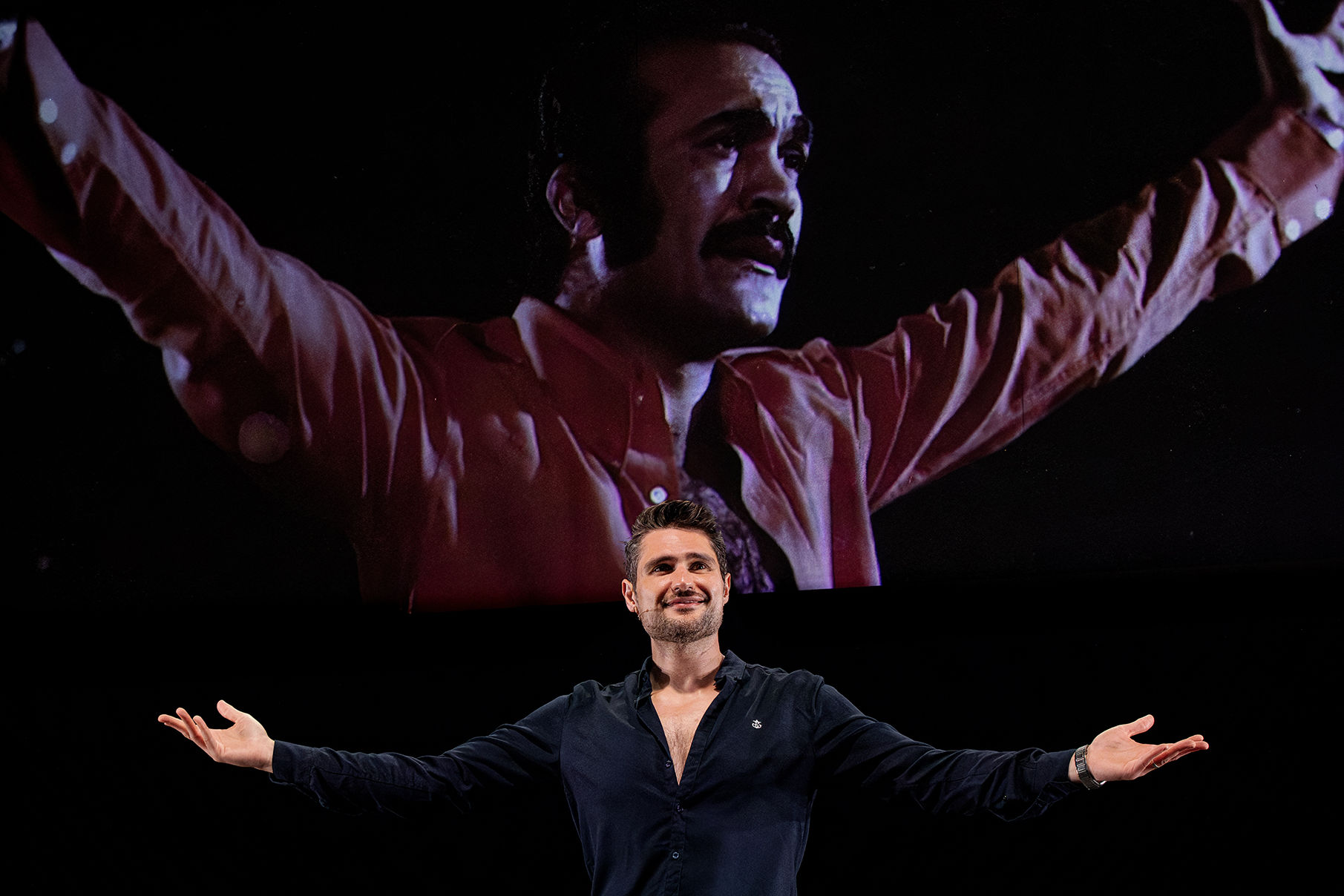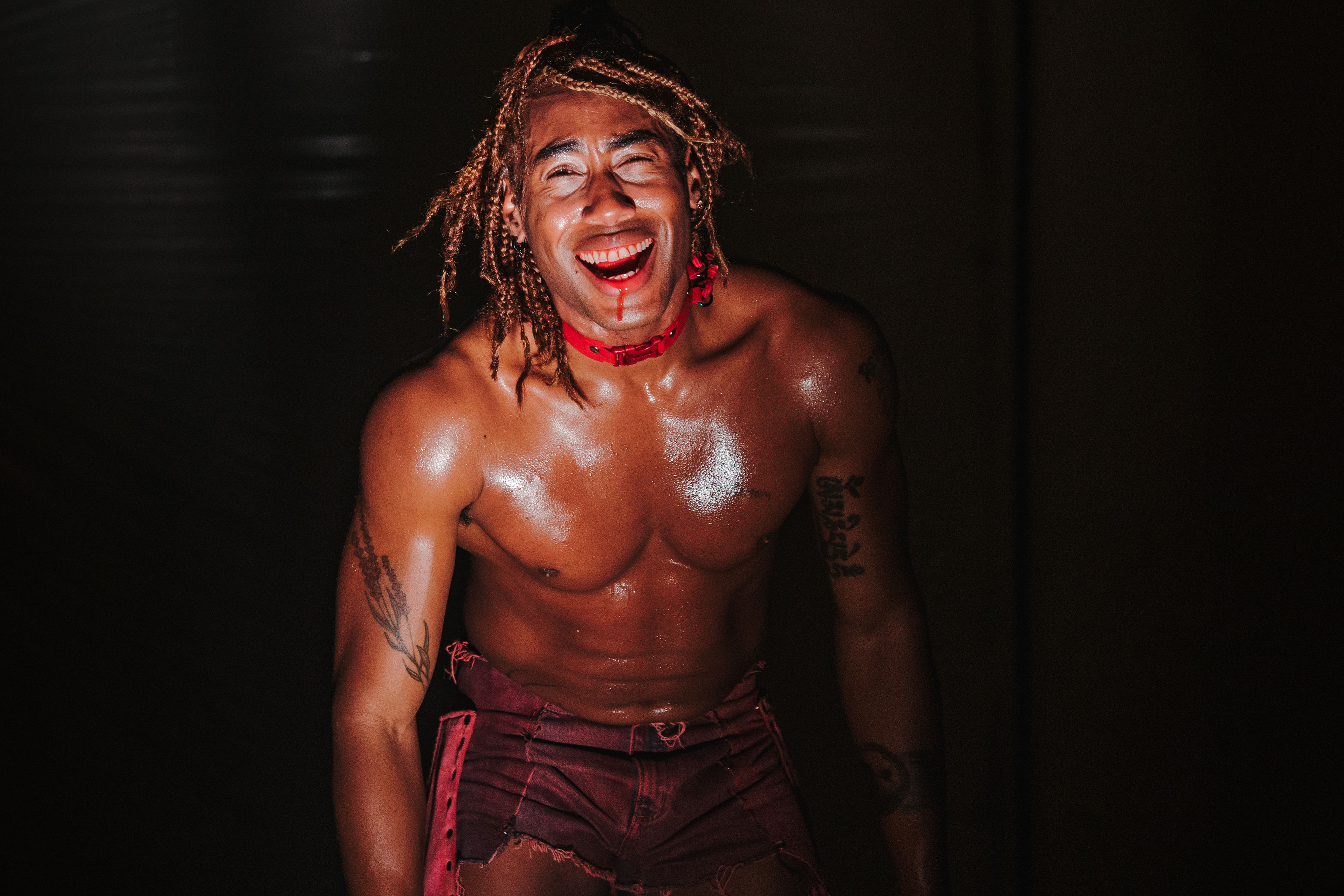Juggling, YouTube Videos, Whispering Children: Notes from TBA 2016
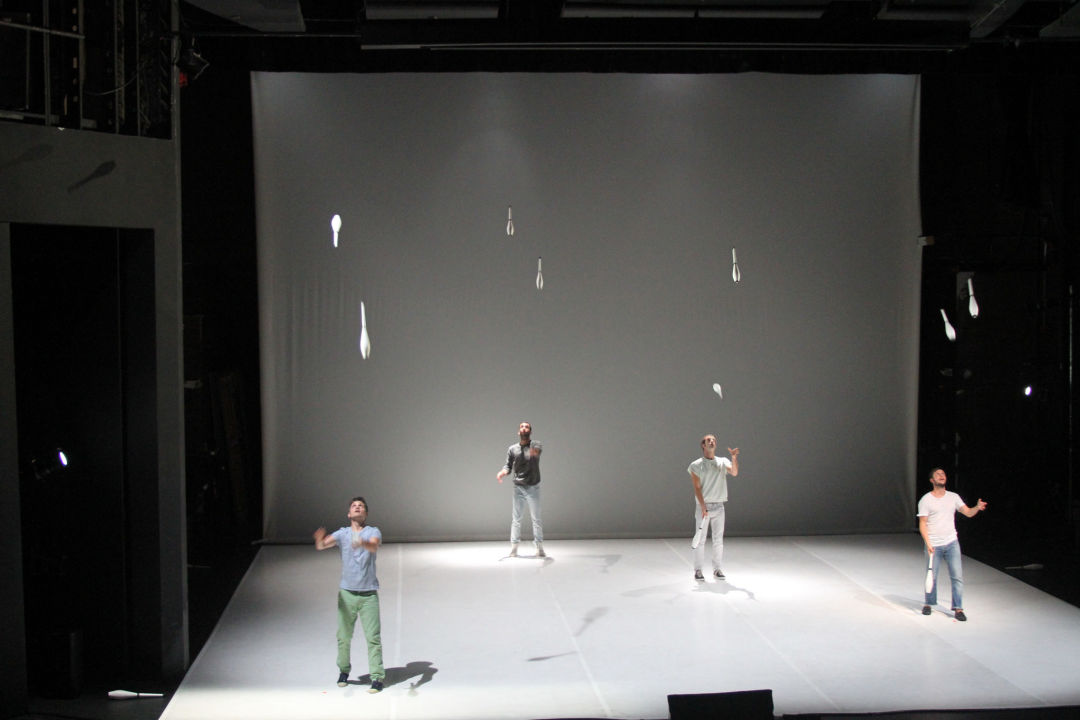
Alessandro Sciarroni's mesmerizing jugglers.
Image: Jonah Levine
Dancing, and posing, and juggling, and whispering, and stomping, and ululating, and jamming: 2016's Time-Based Art Festival has wound down after an epic 10-day onslaught. With so many strong pieces to absorb this year, we had trouble choosing our favorites, but we've finally narrowed it to our top 10 shows. Behold, our highlights from a kick-ass festival.
Christian Rizzo/ICI-CCN Montpelier, d’aprés une histoire vraie

Christian Rizzo's folk/club mash-up.
Image: Anke Schuettler
Eight men take the stage, undulating and clapping and stomping. Their movements recall folk traditions—French choreographer Christian Rizzo was inspired by a performance he saw in Istanbul—with intermittent bursts of more casual or even club-like dance moves. But as they rearrange their constellations, shifting from duos to trios to bigger groups, what’s clearest is the primal joy of moving, and of moving with others. It’s meditative and inclusive and propulsive, but above all joyous—so wonderfully joyous. —RJ
Britt Hatzius, Blind Cinema
“Now there’s, like, an egg, kind of an egg, thing I guess, and it’s moving and oh! Oh! There was a. Well. Like, a. Oh! His eyes are big. Scary. And, um, it’s kind of dark.” There’s a child whispering in your ear, as you sit, blindfolded, in the Hollywood Theatre, before a movie that you’ll never see. Except through the words of this kid, speaking softly in breathy gasps through a lengthy ear trumpet from the seat behind you, as you try and interpret the dialogue free audio-soundtrack and wonder why the woman four seats down is laughing while your visual interpreter appears mildly terrified by what’s unfolding. The intimacy, the breathy whispers, the raw reactions—the children involved are seeing the movie for the first time themselves—all create a memorable shared world as the adults and children present come up against the limitations of language, and the gift of altered perspective. —FM
Narcissister, Narcissistic Advance
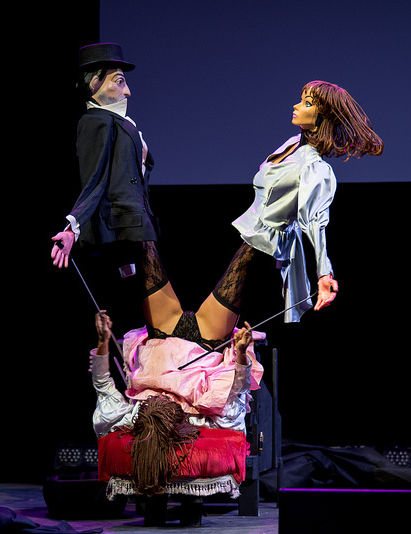
Narcissister does what Narcissister does.
Image: Greg Parkinson
Until you’ve seen a performer in a Barbie-esque mask go spread-eagle onstage, stick a sparkler into her vagina, and light it on fire, you haven’t really lived. —RJ
Pepper Pepper, Critical Mascara: A Post-Realness Drag Extravaganza
Those looks. Those moves. The astounding, extravagantic showmanship. So gobsmacking, I can’t even. Just check out the photos and be amazed. —FM
Royal Osiris Karaoke Ensemble, The Art of Luv (Part 1): Elliot
YouTube haul videos. Mindful meditation techniques. UCSB shooter Elliot Rodger. That’s a trio that seems, at first blush, pretty incongruous. Gold face paint, Jägermeister, and some very creative sushi consumption don’t add much logic to the mix. But in Royal Osiris Karaoke Ensemble’s The Art of Luv (Part 1): Elliot, it makes for a brilliant—and disturbing—stew.
The devised theater piece ruminates on sexual attraction and narcissism, via a funny trove of found videos (two brawny men explaining something called the Adonis Golden Ratio; two women schooling a room full of potential suitors on how to approach them in non-creepy ways). But these videos are cut with clips of Rodger, the California college student who killed six people and injured 13 others in 2014, fuming about his lack of success with girls. (And he always, always refers to them as “girls.”) It’s a startling juxtaposition—awkward stabs at connection set against the anger of an alienated young man ranting into the void of the Internet.
It’s made all the more unsettling by the way satin robe-clad performers Tei Blow and Sean McElroy stare into a video camera and flatly intone dialogue from the footage, with their faces, caked in gold paint, projected onto sheets behind them. They move slowly and ritualistically, occasionally entreating us to focus on our breath, as if we’re in yoga class. (In a nice touch, each audience member also receives a hot hand towel upon entrance.)
There’s a self-conscious somberness to the proceedings, even as some of the videos tip into hilarity. But you can’t laugh for long—there, again, is Rodger, boyish and lonely and sociopathic, just hours before setting his massacre into motion. —RJ
Kelly Pratt, No No Soliciting
A Portland supergroup is born onstage with members from notable bands like Beirut, Death Cab for Cutie, and El Vy charged with the task of creating songs from audience suggestions. With prompts ranging from a death-metal version of "Happy Birthday" to a minimalist tune on postpartum depression, the musicians are given mere minutes to craft impressive songs and direct each other through it while we all get a glimpse into the process. So. Much. Good. Music. —ED
Luke Wyland, AU and the Camas High School Choir
Ah, adolescence. It’s on full display—in all its mirthful, awkward, self-conscious (but not yet entirely self-aware) glory—by the 80-odd members of the Camas High School choir. The teenagers worked closely with AU frontman Luke Wyland, who joins them and several other professional Portland musicians to unleash textured, galvanic compositions that attest to the magic of unexpected collaboration. The students sing, they make animal noises, they do the Macarena (to the relief/horror of those who feared/hoped the dance craze would die out before the next generation latched on). Plus, choir director Ethan Chessin does some shimmying of his own, to the clear delight of his students. —RJ
Ali Chahrour, Leila’s Death
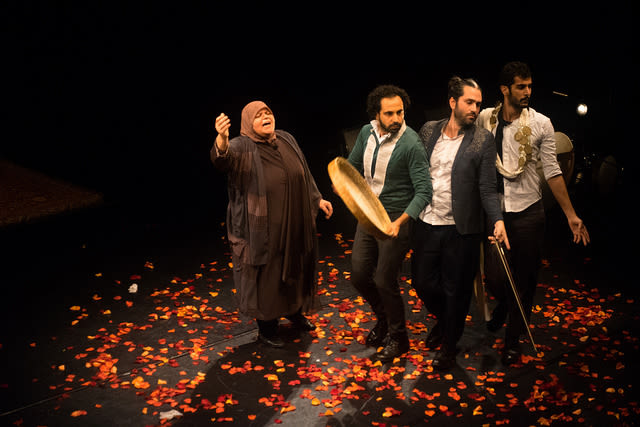
Leila mourns in Ali Chahrour's powerful piece.
Image: Jonathan Raissi
A 50-year-old woman keens, arms raised, a professional mourner sparring with death, flanked by musicians, led in dance by the work’s creator Ali Chahrour. An exploration of Islamic Shiite religious ritual, a meditation on death, a graceful evocation of loss, Leila’s Death is carried by the tour-de-force that is its protagonist, and a voice that seems to express all of human suffering in heart-wrenching ululation. —FM
Allie Hankins, better to be alone than to wish you were
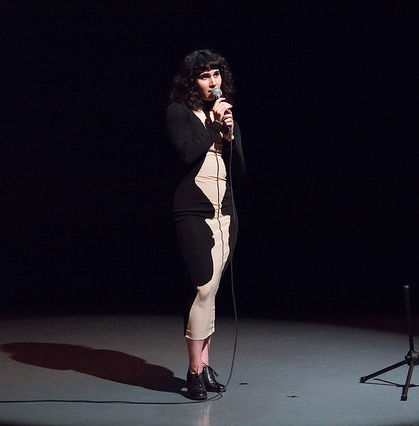
Allie Hankins brings canniness and charisma.
Image: Chelsea Petrakis
Bridging lecture and dance—with song and even some stand-up tossed in for good measure—Allie Hankins proves herself one of Portland’s canniest and most charismatic performers. She announces early on that she’s decided to forego nudity, which had been central earlier in the work’s development but has since become, in Hankins’s words, “offputting.” Instead, she prances around with various wooden contraptions, expounds upon the mind-altering effects of “signature semen,” plays with sound distortion and audio feedback, muses discursively on desire, does some very coy choreography with the microphone cables, and explores the sonic possibilities of Jell-O. The piece could still use some tightening, but Hankins has such presence that it hardly matters. —RJ
Alessandro Sciarroni, Untitled_I will be there when you die
For 50 minutes, four master Italian jugglers flip clubs. First one, then two, then more. Sometimes they drop one and gaze at it dejectedly. There’s silence at first and then bleepity-bloopity video game-style music and finally some kind of mournful, synthy stuff. Towards the end, trippy light casts colorful silhouettes onto the back wall. The men keep juggling. And juggling. And juggling. And it is beyond mesmerizing. —RJ


